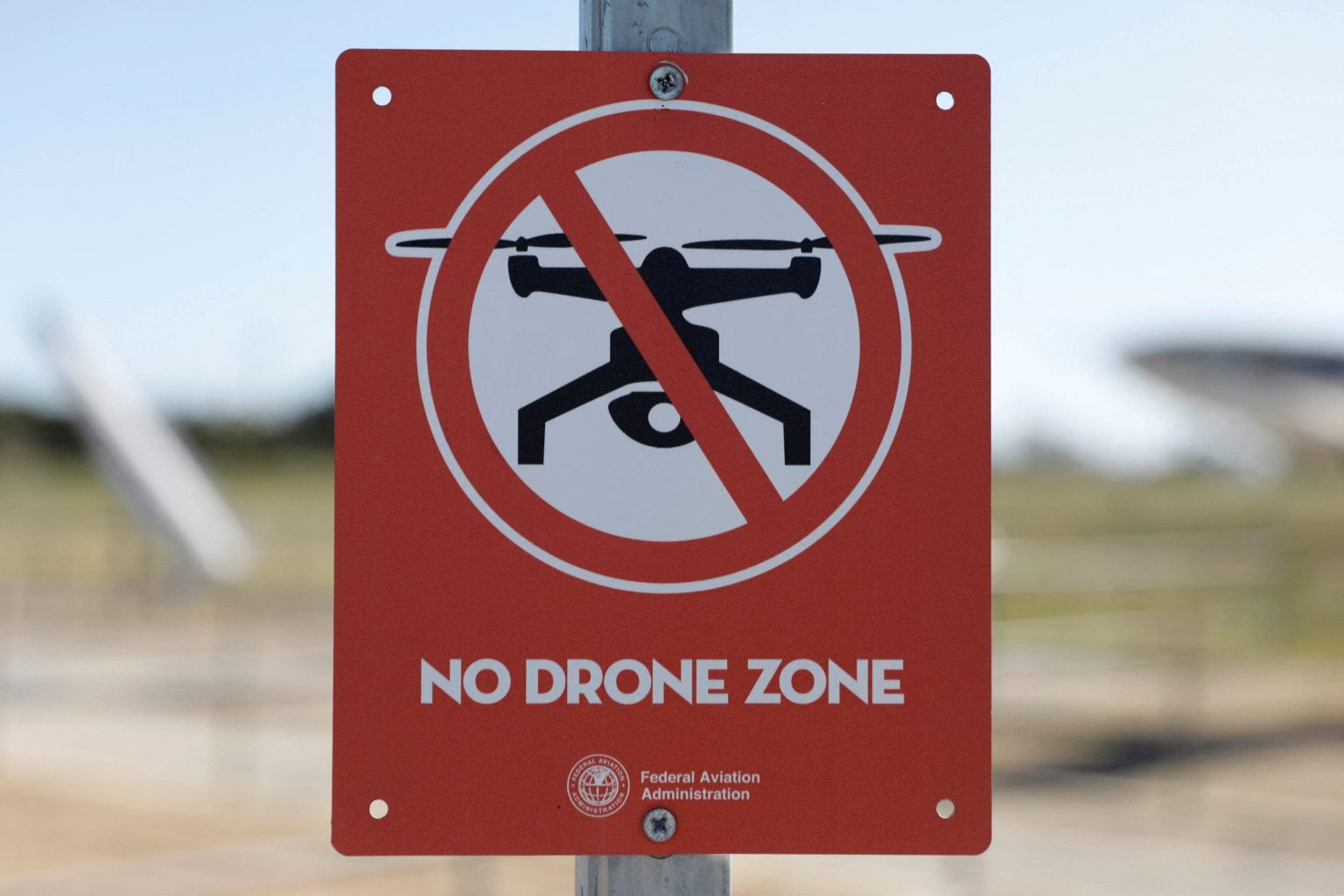The Federal Aviation Administration (FAA) has significantly escalated its response to the recent surge in reported drone sightings across the Northeast, implementing sweeping flight restrictions in New York following similar measures in New Jersey just a day prior. These restrictions, effective through January 18, 2025, blanket some of the most densely populated areas of New York State, including a near-total lockdown of airspace over New York City’s boroughs. This unprecedented move reflects the growing concern over the unidentified drones and aims to preemptively address any potential security risks they may pose. The FAA’s actions mark a shift from a reactive stance to a more proactive approach in managing the evolving drone landscape.
The new regulations, issued as “No-Fly Zone” notices for “special security reasons,” essentially prohibit most drone operations within the designated areas. However, the FAA has carved out specific exemptions for crucial government functions and essential services. Drones utilized in national defense, homeland security, law enforcement, firefighting, rescue operations, and disaster response are permitted to operate within the restricted airspace. This crucial exemption ensures that vital governmental functions and emergency services can continue uninterrupted, leveraging drone technology for their respective missions.
Furthermore, commercial drone operators can also secure authorization to fly within the restricted zones, provided they obtain a valid statement of work. This statement outlines the specific purpose and operational details of the proposed drone activity, allowing the FAA to assess the legitimacy and safety of the operation. This provision acknowledges the importance of commercial drone applications while maintaining a degree of regulatory oversight. Both government and commercial entities seeking to operate within the restricted airspace must also obtain a Special Government Interest (SGI) waiver. This emergency authorization, granted by the FAA, provides a legal pathway for operating drones in restricted zones for specified purposes. It adds an additional layer of scrutiny to ensure that all drone activities align with safety and security protocols.
The FAA’s decisive action follows over a month of persistent reports of drone sightings, particularly in New Jersey, where nightly occurrences have become increasingly common. These sightings have sparked bipartisan concern among citizens and lawmakers, prompting demands for a comprehensive investigation and effective countermeasures. The escalating frequency and geographical spread of the sightings have heightened anxieties, leading to speculation about the nature and purpose of these drone operations.
A multi-agency investigation, involving the FBI, FAA, Department of Homeland Security, and the Department of Defense, is underway to determine the origin and intent of these drone flights. While the investigation has so far yielded no evidence of a direct threat, the sheer volume of reported sightings – nearly 5,000 in recent weeks – underscores the need for enhanced regulatory oversight and robust counter-drone measures. Despite the lack of confirmed threats, the ongoing investigation highlights the potential security vulnerabilities posed by unregulated drone activity.
The joint investigation, while still ongoing, has managed to generate leads in approximately 100 of the reported sightings. This, however, represents a small fraction of the total reports, leaving a significant number of sightings unexplained. The lack of concrete information surrounding the majority of these incidents has fueled public concern and underscores the need for more effective drone identification and tracking technologies. While the agencies involved have reassured the public that they have found no immediate threat, they have concurrently urged Congress to bolster existing counter-drone legislation. This legislative push aims to equip law enforcement and security agencies with the necessary tools and authority to effectively address the evolving drone threat landscape. The call for expanded legislative powers reflects the recognition that existing regulations may be inadequate to address the escalating complexity of drone operations and the potential risks they pose.
As of now, New York and New Jersey are the only states to implement such widespread flight restrictions in response to the recent surge in drone sightings. This localized response suggests that the drone activity, while widespread across the Northeast, may be concentrated in these specific regions. The absence of similar restrictions in other states could indicate that the perceived threat level varies geographically, or that other states are adopting a wait-and-see approach, pending the outcome of the ongoing investigation and potential federal legislation. The disparity in responses highlights the complex and evolving nature of the drone challenge, requiring a nuanced and adaptive approach to regulation and enforcement.
The FAA’s proactive measures reflect a broader recognition of the growing challenges posed by unregulated drone operations. As drone technology becomes increasingly accessible and sophisticated, the potential for misuse and the associated security risks become more pronounced. The imposition of these flight restrictions serves as a preemptive measure, aiming to deter unauthorized drone activity and mitigate potential threats in densely populated areas. The FAA’s actions signal a shift towards a more proactive and assertive regulatory approach in managing the increasingly complex drone landscape.
The long-term implications of these restrictions remain to be seen, but they undoubtedly represent a significant development in the ongoing dialogue surrounding drone regulation and security. The balance between fostering innovation and ensuring public safety is a delicate one, and the FAA’s actions underscore the ongoing effort to navigate this complex terrain. The current restrictions, while temporary, may pave the way for more permanent regulations as the government grapples with the long-term implications of integrating drones into the national airspace.
The current situation highlights the need for a comprehensive and adaptable regulatory framework that can effectively address the evolving drone landscape. Balancing the legitimate uses of drone technology with the imperative to protect public safety and national security will require ongoing dialogue and collaboration between government agencies, industry stakeholders, and the public. The FAA’s actions represent a significant step in this ongoing process, but the long-term solution will require a multi-faceted approach that incorporates technological advancements, robust regulations, and effective enforcement mechanisms.

